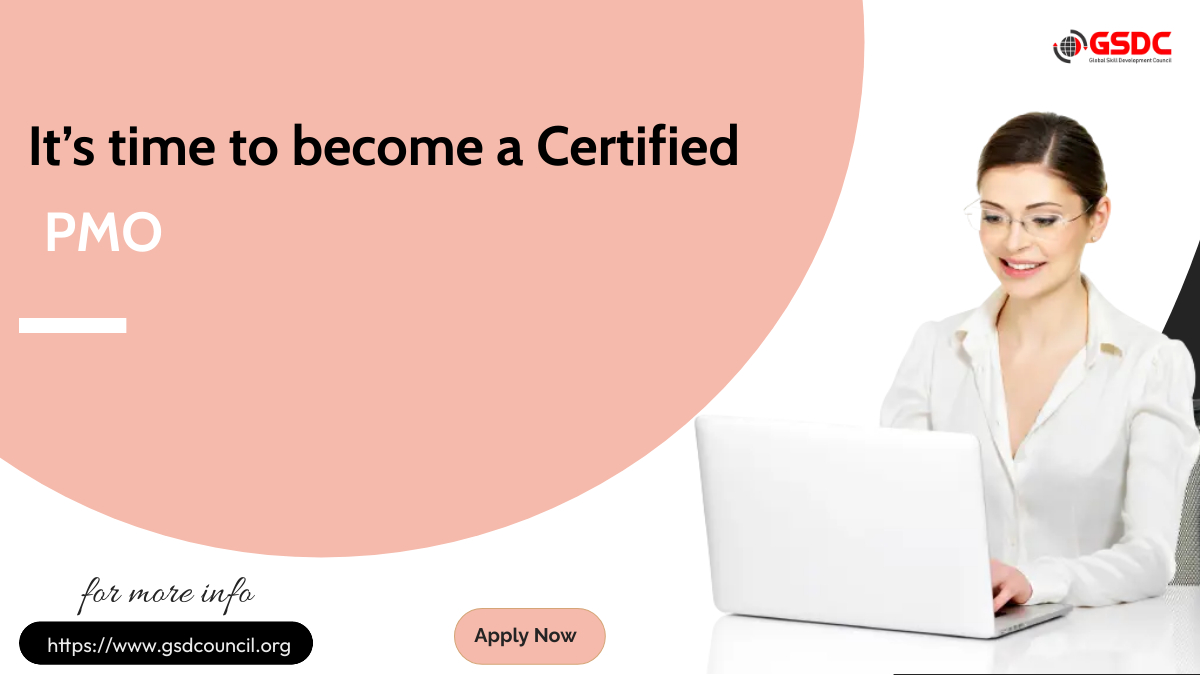What is Project Management?
Project management is the process of leading a team to achieve specific goals and objectives within a defined timeline, budget, quality, risk, and scope.
PMO Certified Professional certification is highly valued by employers around. It displays the holder's prowess in coordinating projects with strategic objectives, making the most use of resource allocation, and raising overall project effectiveness. By earning this certification, professionals can increase their credibility, expand their career options, and be better equipped to support their organizations by successfully managing and leading PMOs.
It involves planning, organizing, and executing projects in a systematic manner to ensure that the project is delivered on time, within budget, and to the desired quality standards. Project management is a critical component of any organization that aims to achieve its objectives and deliver value to its stakeholders. It provides a systematic and structured approach to plan, executing, and controlling projects, ensuring they are completed on time, within budget, and to the desired quality standards.

Learn to Implement PMO Best Practices:
Implementing PMO best practices involves understanding and applying industry-recognized standards and methodologies in project management. This includes frameworks like PMBOK (Project Management Body of Knowledge), PRINCE2, Agile, or specific practices tailored to your organization's needs. It also includes establishing standardized project management processes and workflows that guide project initiation, planning, execution, monitoring and control, and closure.
Incorporating PPM in the Strategic PMO:
PPM, or Project Portfolio Management, is a critical aspect of PMO functions. It involves selecting and managing a portfolio of projects to ensure alignment with the organization's strategic objectives. To incorporate PPM into the PMO, you need to prioritize projects based on their strategic value, allocate resources effectively, and make decisions about starting, pausing, or terminating projects to optimize the portfolio's overall performance.
Utilizing Business Intelligence for Decision-Making:
Business Intelligence (BI) involves collecting, analyzing, and visualizing data to support decision-making. In the context of a PMO, BI can provide valuable insights into project and portfolio performance. Utilizing BI tools and techniques, the PMO can create dashboards and reports that offer real-time visibility into project status, budget utilization, resource allocation, and other critical metrics. This data-driven approach enhances decision-making at all levels of the organization.
Utilizing a PMO Dashboard:
A PMO dashboard is a visual representation of key project and portfolio metrics. It provides stakeholders with a quick, easy-to-understand overview of project performance. The dashboard typically includes information on project timelines, budgets, resource allocation, risks, and issues. It allows stakeholders to identify trends, potential problems, and areas for improvement at a glance.
Establishing a Suitable Organizational Structure for the PMO:
The organizational structure of the PMO is critical to its effectiveness. The structure can vary, with common models including centralized, decentralized, or hybrid PMOs. When establishing the PMO's structure, you need to consider factors like the organization's size, industry, project complexity, and strategic goals. The structure should align with the organization's needs and culture. The PMO's role, responsibilities, and reporting relationships should be clearly defined within the chosen structure. This clarity ensures that the PMO can function smoothly and fulfil its objectives.
By focusing on these areas, you can become a certified PMO professional who not only understands the foundational principles of PMO management but also possesses the skills to apply best practices, make data-driven decisions, and structure the PMO effectively to support the organization's strategic goals. This holistic approach is essential for achieving success in PMO roles and contributing to the overall success of projects and the organization.
Conclusion:
In conclusion, project management is a critical process that involves careful planning, organizing, and executing projects to achieve specific goals within set constraints.
By breaking down the anatomy of project management, we can see that it is a complex process that requires effective communication, collaboration, and problem-solving skills.
To succeed in project management, it’s essential to have a clear understanding of project goals, timelines, and resources needed to achieve them.
Additionally, project managers must be skilled in identifying and managing risks, ensuring stakeholder buy-in, and adapting to changing circumstances.
While there is no one-size-fits-all approach to project management, by following best practices and learning from past experiences, project managers can increase their chances of success.
In today’s fast-paced business environment, project management is more critical than ever before.
By embracing project management principles and methodologies, organizations can deliver successful projects, meet customer needs, and gain a competitive advantage in the marketplace.
Thank you for reading!


No comments yet